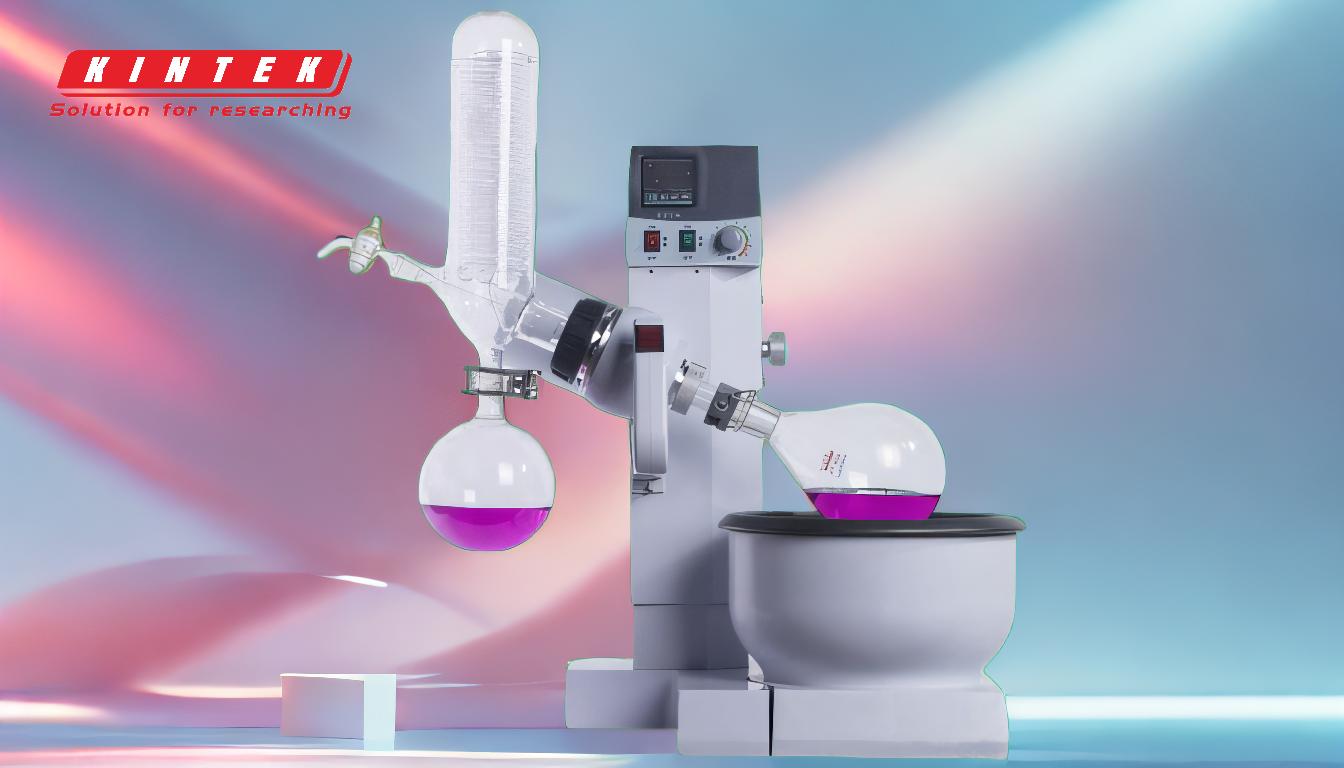The rotary evaporator, commonly known as the rotovap, was invented in 1950 by Lyman C. Craig, an American chemist and biochemist. This invention revolutionized the process of rotary evaporation, making it significantly more efficient for use in chemical and pharmaceutical laboratories. The rotovap is a crucial piece of equipment for solvent removal, distillation, and concentration of samples, and its invention marked a pivotal advancement in laboratory technology.
Key Points Explained:

-
Inventor of the Rotovap:
- The rotary evaporator was invented by Lyman C. Craig, an American chemist and biochemist.
- Craig's work in the field of chemistry and biochemistry led to the development of this innovative device, which streamlined laboratory processes.
-
Year of Invention:
- The rotovap was invented in 1950.
- This period was marked by significant advancements in chemical research, and Craig's invention contributed to the efficiency and precision of laboratory work.
-
Purpose of the Invention:
- The primary goal of the rotovap was to make the process of rotary evaporation more efficient.
- Rotary evaporation is a technique used to remove solvents from samples through evaporation under reduced pressure, and the rotovap significantly improved the speed and effectiveness of this process.
-
Impact on the Chemical and Pharmaceutical Industries:
- The invention of the rotovap brought significant innovation to the chemical and pharmaceutical industries.
- It allowed for more efficient solvent removal, which is crucial in the synthesis and purification of chemical compounds and pharmaceuticals.
-
Functionality of the Rotovap:
- The rotovap operates by rotating a sample under reduced pressure, which increases the surface area for evaporation and allows for quicker and more efficient solvent removal.
- This method is particularly useful for heat-sensitive compounds, as it minimizes the risk of thermal degradation.
-
Legacy of Lyman C. Craig:
- Lyman C. Craig's invention of the rotovap is a testament to his contributions to the field of chemistry.
- His work not only advanced laboratory techniques but also set a standard for future innovations in chemical research equipment.
In summary, the rotovap, invented by Lyman C. Craig in 1950, has had a profound impact on the efficiency and effectiveness of laboratory processes, particularly in the chemical and pharmaceutical industries. Its invention marked a significant milestone in the development of laboratory technology, and its legacy continues to influence modern scientific research.
Summary Table:
| Key Aspect | Details |
|---|---|
| Inventor | Lyman C. Craig, American chemist and biochemist |
| Year of Invention | 1950 |
| Purpose | Streamline rotary evaporation for efficient solvent removal |
| Impact | Revolutionized chemical and pharmaceutical laboratories |
| Functionality | Rotates samples under reduced pressure for faster, safer solvent removal |
| Legacy | Advanced laboratory techniques and set standards for future innovations |
Interested in how rotary evaporators can enhance your lab's efficiency? Contact us today to learn more!

















